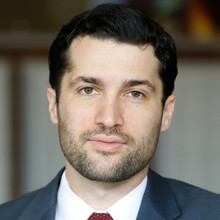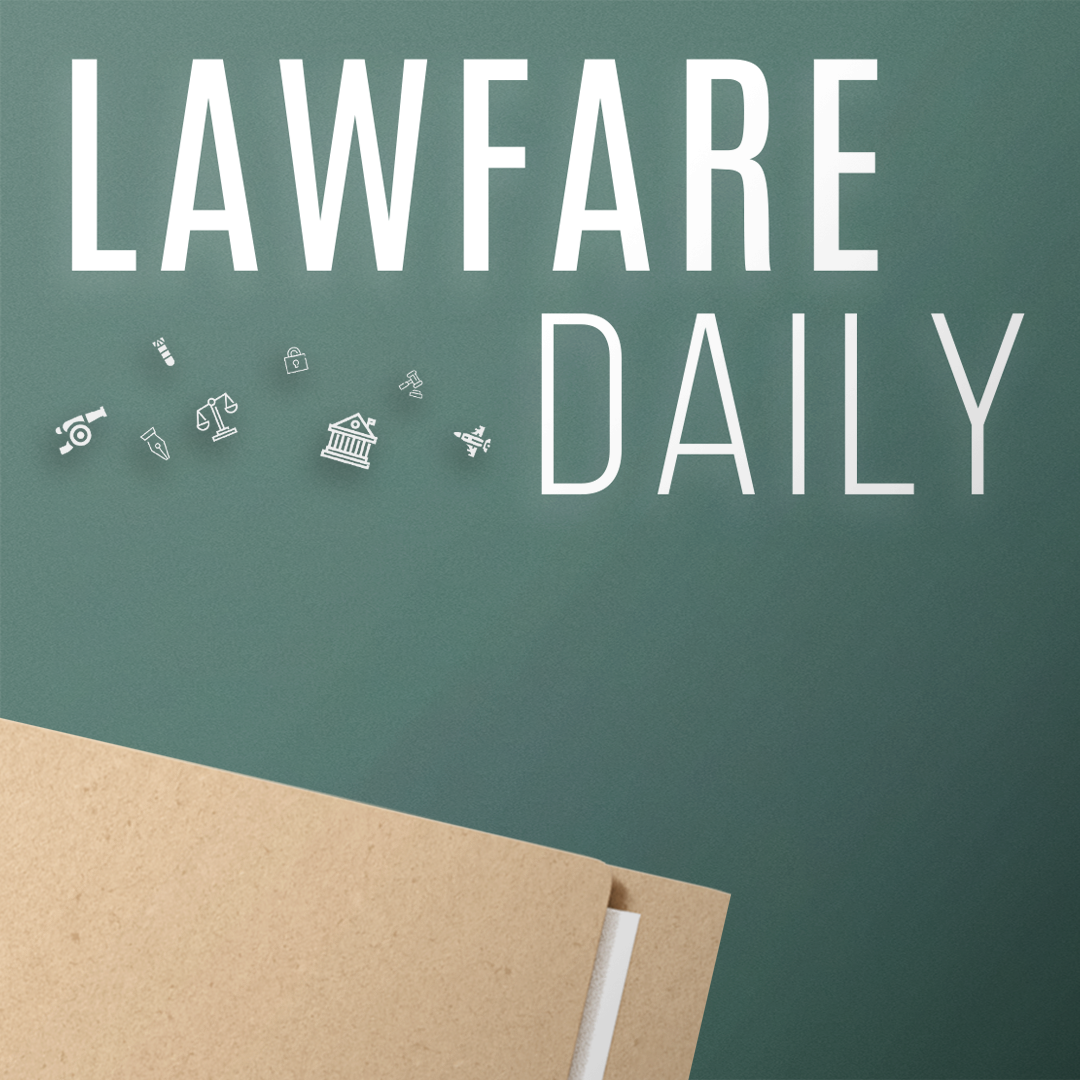The Supreme Court Punts on Section 230
-).jpg?sfvrsn=5f8fac12_3)
Published by The Lawfare Institute
in Cooperation With

The Supreme Court’s big case on Section 230, Gonzalez v. Google, was going to rewrite the law of electronic communications. It was going to finally hold platforms accountable or, alternatively, give them the ultimate get-out-of-jail-free card. It was going to destabilize the entire legal foundations on which the internet developed. It was going to break the internet. It was going to be the most important internet law decision ever. It was going to…
…fizzle out and do absolutely nothing.
On Thursday, the justices unanimously sent Gonzalez back to the lower courts without ruling on the parameters of Section 230, the law that protects online platforms from liability for third-party content. Gonzalez was effectively swallowed whole by its supposedly peripheral companion case, Taamneh v. Twitter, which posed the more obscure question of when platforms may face secondary liability under the Anti-Terrorism Act’s civil liability provisions. The future of the internet does not turn on this question. But the case against Google does, so the Supreme Court, having decided Taamneh in favor of Twitter, remanded Gonzalez to the U.S. Court of Appeals for the Ninth Circuit for consideration in light of that decision, most likely to be dismissed—and, for better or for worse, it did so without upending 30 years of internet law.
Gonzalez immediately seized the attention of internet lawyers when the Court first granted certiorari. It represented the first time in Section 230’s 27-year history that the justices would consider the statute’s meaning, at a time when the liability shield faced increasing scrutiny from both left and right.
Like Taamneh, the case was brought by the families of people killed in ISIS terrorist attacks, who sued technology platforms on which ISIS had established a presence in advance of the attack—arguing that the platforms’ amplification of ISIS content through recommendation algorithms was sufficient for liability under the Anti-Terrorism Act (ATA) as amended by the Justice Against Sponsors of Terrorism Act (JASTA). In Gonzalez, the Court was set to consider whether Section 230 shielded Google from such claims. Taamneh, meanwhile, focused on the substantive matter of platforms’ potential ATA and JASTA liability.
As the first-ever Section 230 case before the Supreme Court, Gonzalez would have been significant no matter what, but its potential impact was so vast because of the expansiveness of the plaintiffs’ argument. Many internet lawyers and scholars were anxious that the Court might find that platforms could be held liable for content boosted through algorithmic recommendation systems, which could arguably have led to a vast change in the functioning of social media as newly cautious platforms sharply limited what they allowed on their services. Amicus briefs cautioning the Court against taking this approach poured in.
During oral arguments in February, it seemed that the justices had taken note of these concerns—perhaps, in part, because of a bizarrely weak performance by counsel for Taamneh. The justices sounded strikingly cautious about the potential for damage to the internet. Following arguments, speculation grew among Court watchers that the justices might find a way to dispatch with the issue without having to touch the third rail of Section 230, potentially by dismissing it as “improvidently granted”—essentially canceling its earlier writ of certiorari and leaving the lower court opinion unchanged. There are several reasons why the Court might choose to dismiss a case as improvidently granted, the most dramatic of which being that the justices simply cannot decide what to do on the merits. It’s rare that the Court throws in the towel in such stark fashion (and rarer still that it admits to doing so), but it has happened.
In the end, the Court didn’t exactly take that approach. But it did manage to get rid of Gonzalez—thanks to Taamneh. The similarities between the cases would prove to be key: If the plaintiffs in Taamneh couldn’t state a claim under the ATA and JASTA, then most likely the Gonzalez plaintiffs can’t either, rendering the Section 230 question unnecessary to resolve. And that was, in fact, what the justices suggested on Tuesday.
Of the two cases, Taamneh received far less attention from commentators. In part, this reflected the fact that it centered on complex questions of statutory interpretation and common law tort liability that were intimidatingly complex. Yet the way that the Supreme Court elected to unanimously resolve the case ultimately pursued proved surprisingly simple.
To make their case, the plaintiffs in Taamneh—whose family member was killed in a terrorist attack by ISIS, a designated Foreign Terrorist Organization (FTO)—had alleged that ISIS had used services made available to the public by Twitter and other major social media companies in its fundraising and recruitment efforts. In the plaintiffs’ view, this made Twitter and similarly situated companies liable under the ATA’s civil liability provision, which Congress amended through JASTA in 2016 to cover anyone “who aids and abets, by knowingly providing substantial assistance” acts of international terrorism being committed by FTOs. The plaintiffs argued that the fact that Twitter was aware that ISIS was using its services—even though it took (allegedly inadequate) steps to thwart that use—satisfied JASTA’s requirements. And aiding and abetting the criminal enterprise of ISIS made Twitter liable for the foreseeable death of the plaintiffs’ relative, even though the plaintiffs did not allege any direct links between the services provided and that attack.
Of course, this was a very broad theory of liability—one that would make any private company potentially liable for any terrorist attack pursued by an FTO, so long as they knew the FTO had used services the company made broadly available to the public and the company was unable or unwilling to fully stop the FTO from doing so. But in JASTA, the plaintiffs saw signs that this was exactly what Congress had intended. After all, the express purpose of JASTA was to “provide civil litigants with the broadest possible basis … to seek relief” against those who materially supported terrorist activities. And JASTA indicated that its aiding and abetting principle should be interpreted in line with Halberstam v. Welch, a well-known 1983 opinion from the U.S. Court of Appeals for the D.C. Circuit whose analysis, the plaintiffs argued, supported broad secondary liability.
This was enough to persuade the Ninth Circuit, which found in favor of the plaintiffs in denying Twitter’s motion to dismiss. But the Supreme Court proved more resistant to such a far-reaching liability scheme. Writing for the unanimous Court, Justice Clarence Thomas asserted that, despite its invocation in JASTA, the precise formulations applied by the D.C. Circuit in Halberstam should not be strictly followed. Instead, they had to be read in the context of the common law principles surrounding aiding and abetting liability more generally, which predate and were the subject of Halberstam’s analysis. Given the common law’s focus on identifying culpable misconduct, Thomas argued that aiding and abetting liability under JASTA should only be read as reaching “conscious, voluntary, and culpable participation in another’s wrongdoing,” not the sort of passive awareness and imperfect response that Twitter was alleged to have engaged in. Nor did Halberstam, properly read, suggest that aiders and abettors are liable for all the wrongful actions of a criminal enterprise; instead, the resulting wrongful act had to be “a foreseeable risk” of the enterprise aided and abetted by the defendant—or the defendant’s involvement in the scheme had to be so systemic that they were culpable for every action that resulted. In the present case, Twitter’s alleged conduct was too marginal to the enterprise and too attenuated from the terrorist attack that killed the plaintiffs’ relative to satisfy either standard, putting them outside the scope of aiding and abetting liability.
This outcome surely has internet companies breathing a huge sigh of relief. Vijaya Gadde, formerly Twitter’s general counsel, posted on the social media app Bluesky after the release of the decision, “I couldn’t even bring myself to hope for this outcome when we set all of this in motion ages ago.” Other entities—like banks—are surely happy to dodge future ATA/JASTA litigation as well. But Taamneh was a case about online speech, and it raised particular questions because of the difficulties of content moderation at scale: It’s impossible to prune out all potentially harmful content across millions of users, and a contrary holding from the Court could have opened the floodgates to litigation over terrorist material left online.
For that reason, the Court’s ruling should also be a relief for people who care about the speech rights of internet users. A “contrary holding” to the one the Court reached, Thomas explains, “would effectively hold any sort of communication provider liable for any sort of wrongdoing merely for knowing that the wrongdoers were using its services and failing to stop them.” Such a holding would likely, as Daphne Keller wrote recently on Lawfare, lead skittish platforms to “adopt new, overly zealous enforcement practices,” which could lead to censorship of, say, innocuous content posted in Arabic or certain types of online political activism, depending on the assumptions and biases of the content moderators.
So what about Section 230? It lives to fight another day, and commentators get to keep arguing about what it means.
The Court did not dismiss as improvidently granted (DIG, as court watchers say) Gonzalez, instead vacating, in a per curiam judgment, the Ninth Circuit’s judgment and remanding to the court to reconsider in light of Taamneh. Given, as the Court noted, that the underlying liability claims in Gonzalez were “materially identical” to those in Taamneh, the likely outcome is that the Ninth Circuit will dismiss the case on those grounds.
Yet the Gonzalez decision, as numerous commentators have noted, is a DIG in all but name. The justices, clearly spooked at oral argument regarding the complexity of sorting out what Section 230 means, managed to avoid saying anything about Section 230. Reading between the lines, one can sense the justices’ almost palpable easing of anxiety in, as they put it, “declin[ing] to address the application of §230 to a complaint that appears to state little, if any, plausible claim for relief.”
But the justices may not be able to avoid the issue forever. Gonzalez ended up being a bad vehicle for interpreting Section 230, but only because of the odd layering of Section 230 on top of a questionable substantive tort claim. But many Section 230 issues arise not in exotic terrorism cases but rather in workaday defamation, harassment, and negligence suits. As the circuit courts continue to hear cases, circuit splits will likely develop. The need for federal uniformity on an issue of such social and economic importance will likely force the Court to revisit the issue sooner or later.
Justice Ketanji Brown Jackson indicated as much in her concurrence in Taamneh, writing to emphasize that “today’s decisions are narrow in important respects” and that “[o]ther cases presenting different allegations and different records may lead to different conclusions.” It’s worth remembering as well that two petitions for certiorari are now pending before the Court concerning recent legislation in Texas and Florida restricting platforms’ content moderation capabilities—cases that touch on similar questions of platform responsibility as Gonzalez and that may end up raising Section 230 issues of their own if the justices wish to consider whether the state-level laws are preempted by Section 230.
Section 230 is, after all, just a statute, and applying the ordinary rules of statutory interpretation to federal law is the bread and butter of what the Supreme Court does. The problem is that Section 230 is no ordinary statute but, rather, a nearly 30-year-old “magna carta of the Internet” upon which the trillion-dollar internet economy relies. There’s no way of avoiding either its enormous policy stakes or the fact that, as Justice Elena Kagan memorably quipped at oral argument, the justices “really don’t know about these things. You know, these are not like the nine greatest experts on the Internet.”
But the Supreme Court won’t be able to plead ignorance forever.







.png?sfvrsn=aed44e61_5)
